From BIG to David Chipperfield, Frank Gehry to Snøhetta: a world tour of the best buildings set to open in 2026
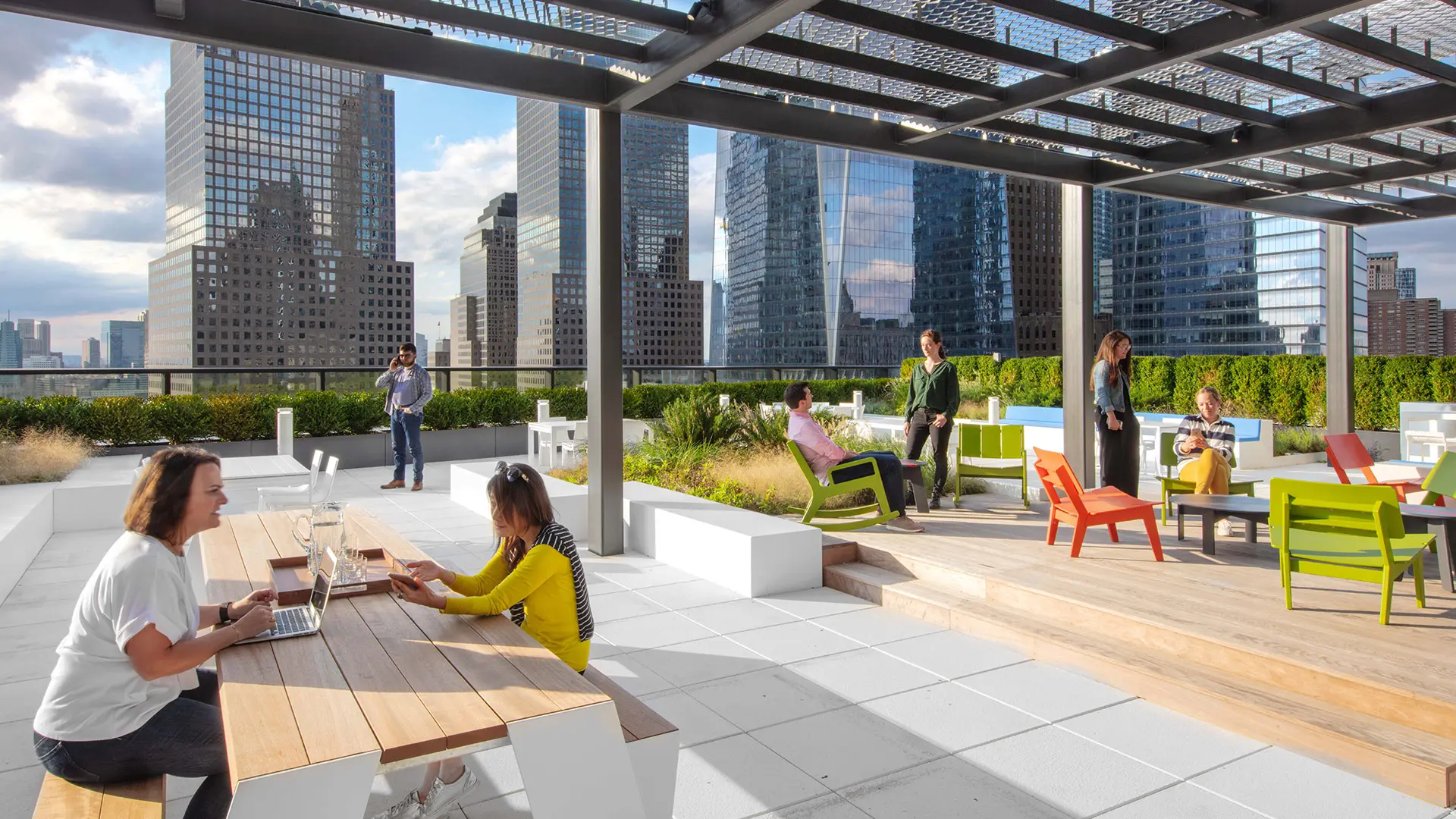
The word office is obsolete. According to Kay Sargent of HOK. We need to start again, and design more flexible, fluid and attractive spaces that provide an element of choice, with the resilience of people and business in mind.
What are offices for, what will they be like in the future and how will the way we work change going forward? These are questions that office workers only dwelt on marginally even in the last couple of years, but which have become the hottest trend topics for the media, CEOs and companies that specialise in workspaces, their design and their furnishing. While over the last 60 years there have been slow and silent revolutions on one hand, which have largely brought about an improvement in manufacturing and the way in which technology has transformed workers’ routines and practices, on the other, offices themselves seem to have made little progress. Aside from the introduction of open spaces, services of various kinds and more ergonomic furnishings, there had been no re-evaluation of the space’s actual raison d'être. The pandemic provided a timely and forceful opportunity for us to start reassessing and rethinking this particular space, reflecting on its identity and the very reasons for its existence.
HOK is at the forefront of this debate. Kay Sargent, co-director of its WorkPlace practice and a member of the Board, explained to us why the concept of “going back to the office” is flawed, that we need to overcome the simplistic concept of “single offices” and reinvent “an ecosystem of spaces” that really will respond to new demands and expectations, be more adaptable, flexible and sustainable, making for enhanced resilience and wellbeing.
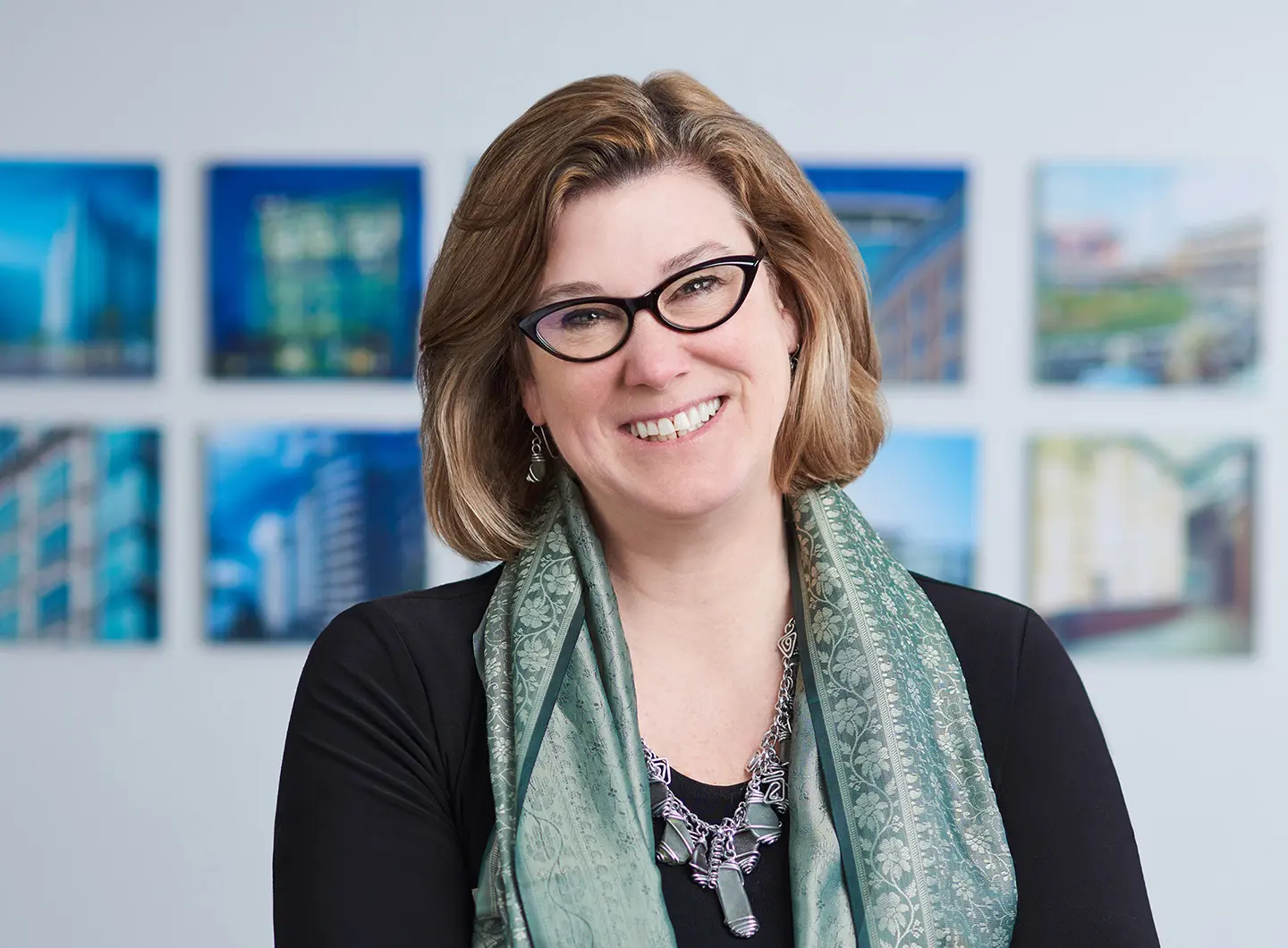
Kay Sargent
We are in a unique situation right now, where it is not just about workplace; work has changed, and the workforce is changing, we can now tap into people that may not live next to the office: where you are does not necessarily matter right now. A lot of people have been moved or relocated, it is empowered people that could not work before, let’s say parents or people that might be neurodiverse and get overwhelmed in an office, to be able to work successfully. But when it comes to the workplace, we believe that a hybrid work scenario will generate an ecosystem of work that will blend working from home, working in a hub – we are going to get rid of the word ‘office’ – and even that space in between might be a coworking space like a local café. There might be days when you just can't work at home or you want better internet, or you just want to get out, but you don't have to go to your office to work. So, what we are seeing is this emerging ecosystem of places where you can work.
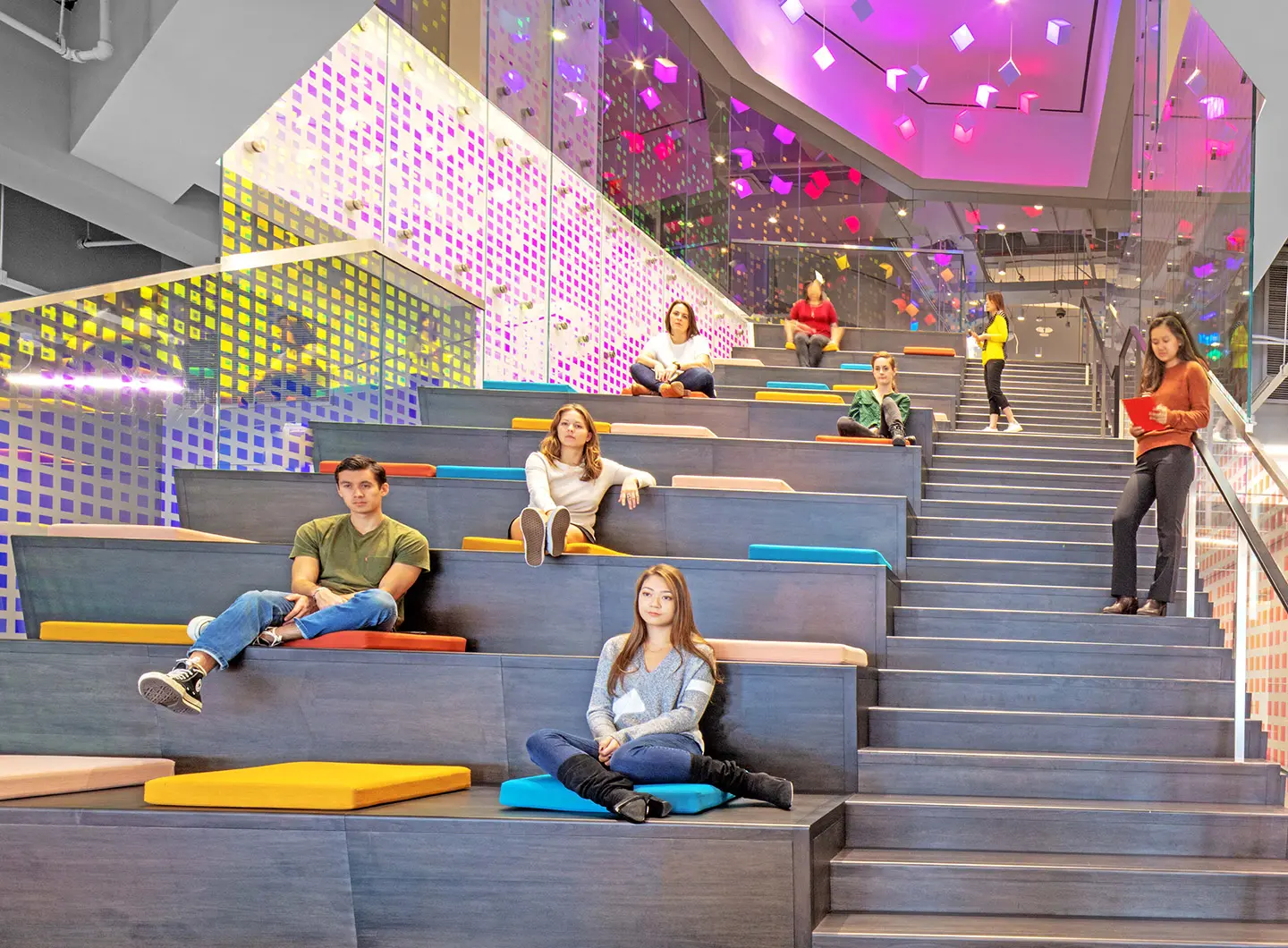
Group M NYC, 2018
Absolutely yes! We call it the home/hub/spoke. The spoke is a more casual and more community-based place, where you might go because you just want more interaction or a better ergonomic setup, better connectivity or to be with your colleagues. It could be a coworking space, a site you own as a company, it could be a coffee shop – for me it is an airport. What is important is that each of these places is designed very purposefully. What we foresee is that the new hubs will become an upscale version of what offices might have been, that can really attract and draw people. Some companies have been working remotely for 20 years and have learned that if the main office or hub does not create a compelling enough space to be in, can’t offer amenities or the best technology or great services, then people won’t go there. Therefore, we must rethink the way we design those places to be awesome experiences that make us want to be there, without having to be there every day.
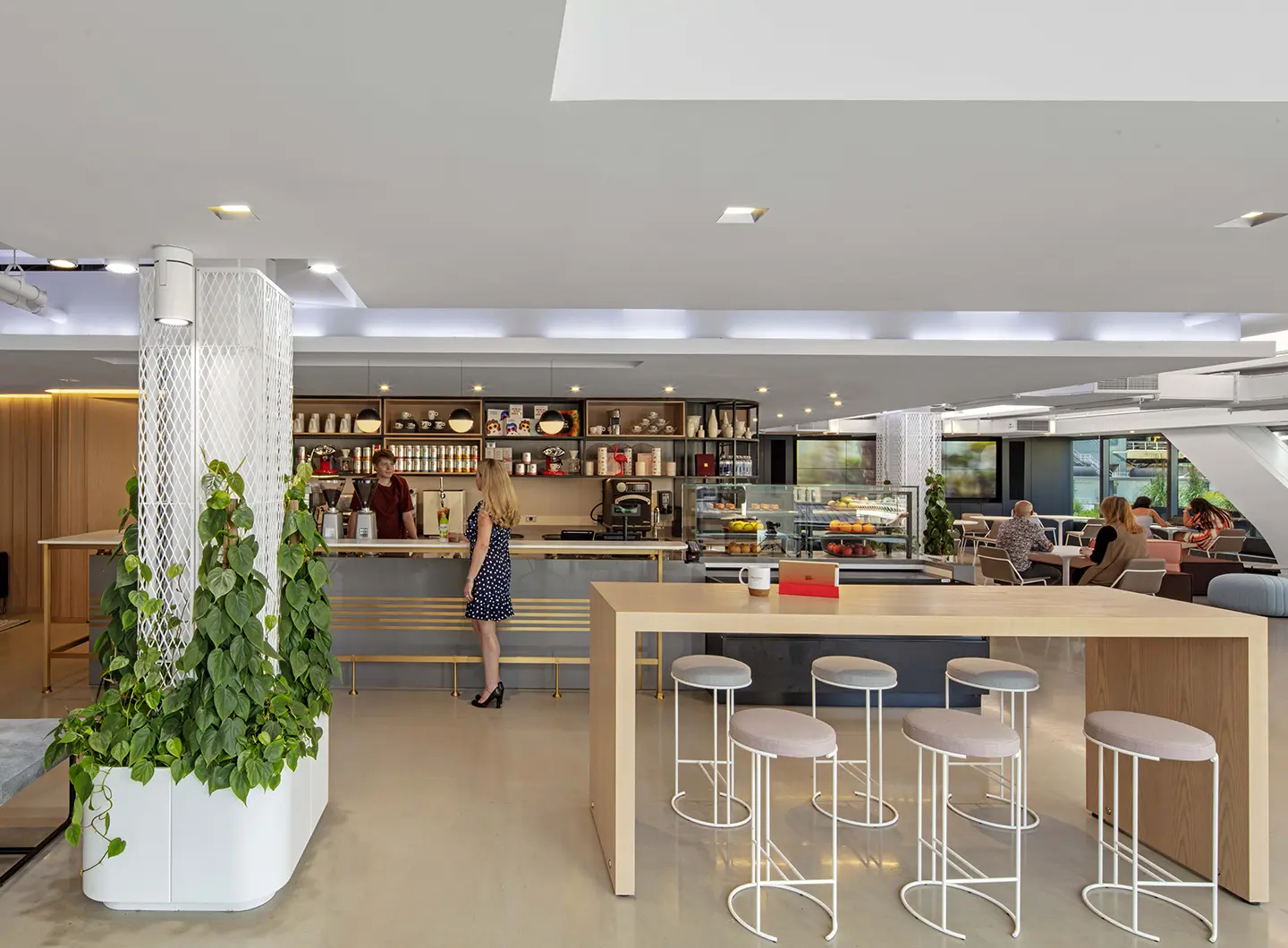
Shiseido NYC, 2019
I am a firm believer that the way we design space absolutely has an impact on individuals, positively and negatively. The way we design a space can make people feel connected, help support the way they work, meet their functional needs, and help create a sense of community. However, we're now seeing that a lot of companies have put up a lot of signs and new protocols or warnings, they put ‘X’s on chairs and tape and marks: all those things just scream ‘danger’ and make us feel very uncomfortable. We believe there is an extra onus on designers to create spaces that are intuitive. We need to design them intelligently and to be smart about the way we design so that people can feel comfortable in these environments, so they are not ghost towns but not so tight and dense.
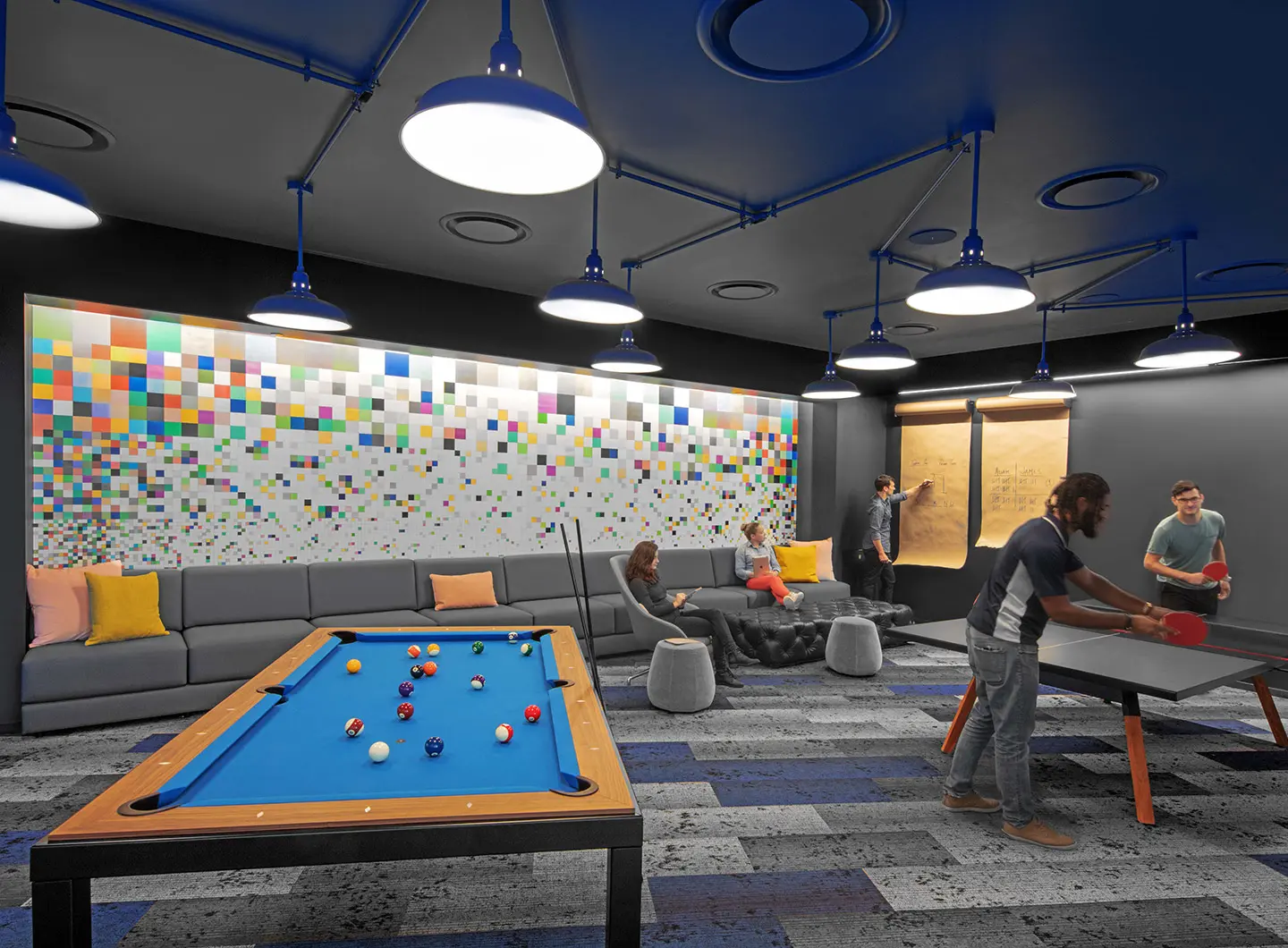
Group M NYC, 2018
I am going to argue that we have done a very poor job of truly integrating technology into the workplace. Take your car: you can turn your car on from in your house, you can warm it up and when you walk up to it, it knows it is you because of the key in your pocket and it unlocks and everything in your car is adjusted to your preset preferences and your phone syncs with your dashboard and your information is there. In our offices, we are still crawling around under our desks trying to find an outlet. We have done a horrible job. Airports are smarter than workplaces. Now, we have an opportunity to truly leverage technology to create a better workplace experience with products that start to address the user experience. So, for instance, before I even get to the office, I can fill out all the security stuff, so I do not have to stand in a line, it knows it is me with facial recognition. I can book a space, I can know who is coming and where they are sitting, I can pre-order my lunch and it can be delivered easily to me or delivered robotically. I can identify where it is warmer or colder, where it is louder or quieter, than I can find the right space for me, I can walk up to a desk and in sync with the fob in my pocket, the height of the desk adjusts to my level, and everything is set to my preferences, my information loads on this monitor, my phone calls are directed there, and everything can adjust to what I need.
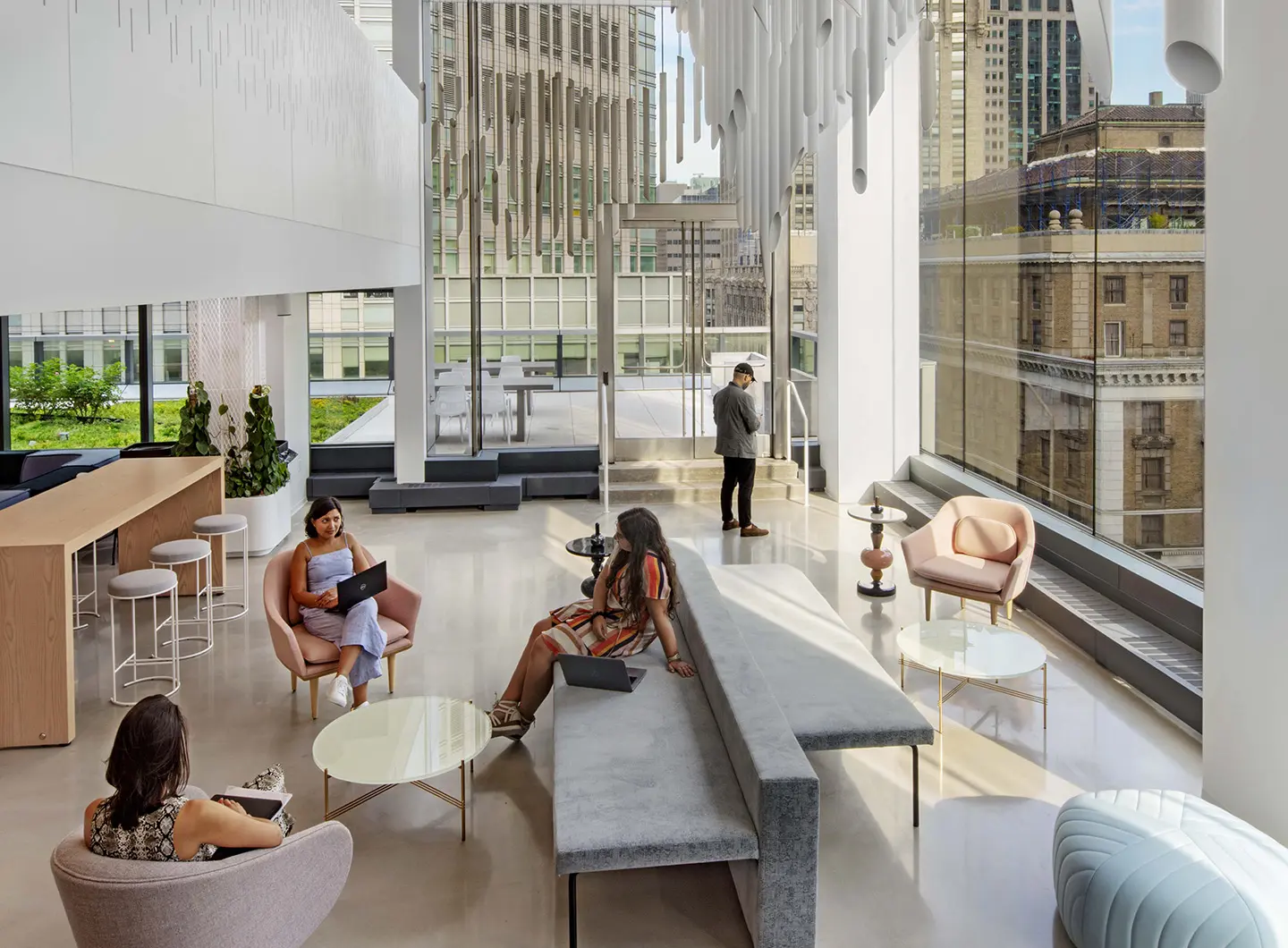
Shiseido NYC, 2019
Two reasons. Not everybody has a sophisticated car, and you can choose to buy a cheap car or an expensive car, while in our workplace we do not have a choice, and if everybody has to have an assigned desk then every desk has to be the same, and they typically go for the economy version versus the intuitive version. Given that we always had to go to the office, it did not have to be appealing. Now a lot of our clients are going to unassigned seating, so if not everybody is coming in every day, I do not need all these empty desks. If I have fewer desks, I can have better desks. If what’s on offer in the workplace isn't any better than at home, then why go to the workplace? We must create compelling environments, offering something better.
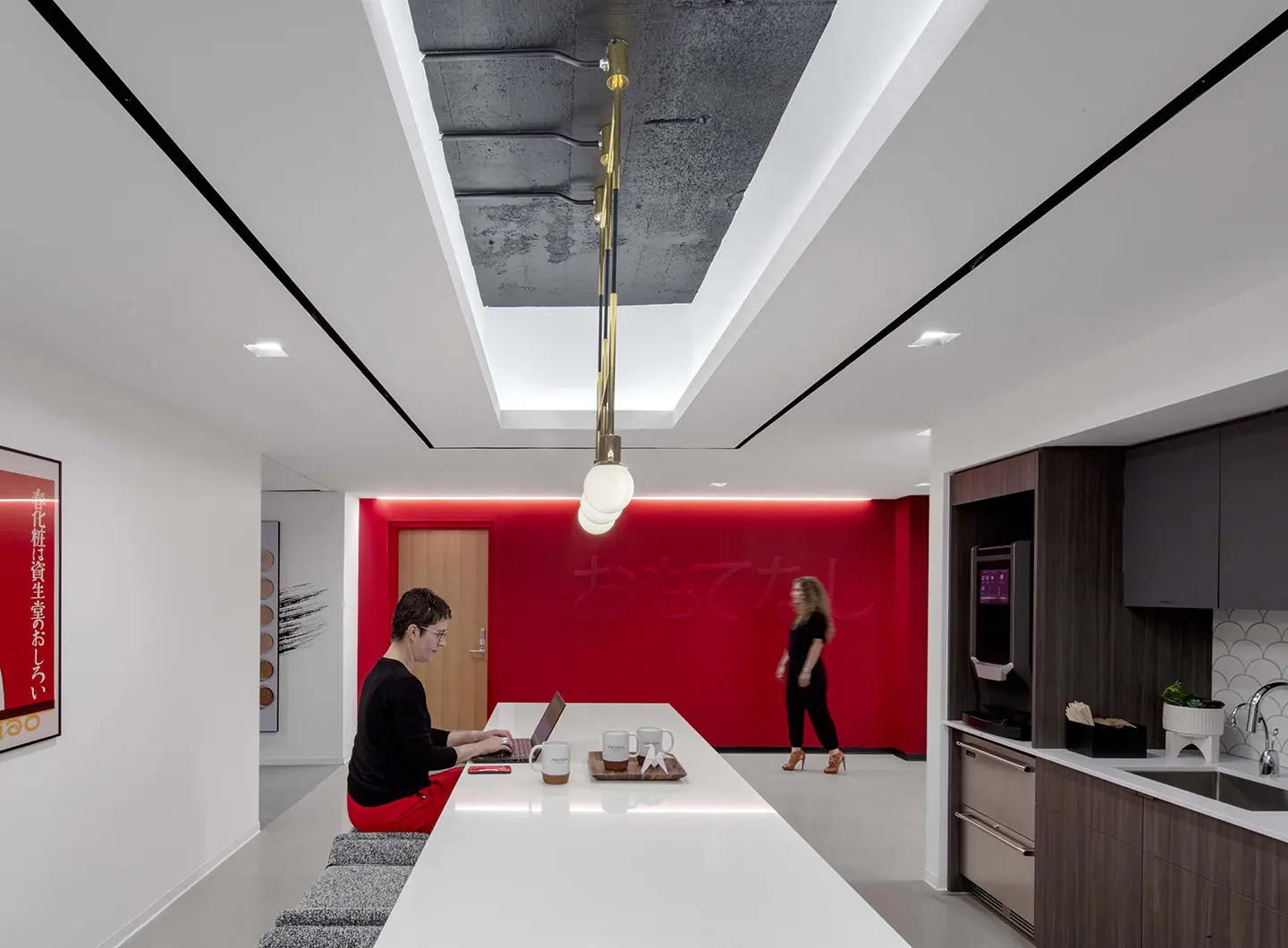
Shiseido NYC, 2019
I am going to say it is both. The most sustainable building is the one that you might already have, the adaptive reuse is critical: we cannot just get rid of old buildings and replace them all with newbuild. From a sustainability standpoint that is not the most viable thing to do. We will be designing new buildings because there is a demand and they will be as intelligent and sustainable as possible and they will address human wellbeing. But we need to be able to adapt our existing infrastructure and re-purpose our existing buildings. Right now, we are seeing a major shift where retail spaces are being repurposed for other uses. We need to repurpose some office spaces, there might fewer office spaces or a move to other locations. If I need more residential how can I adapt what was originally designed to be a commercial building for residential needs and/or vice versa? It is not easy; therefore, we need to create more hybrid or flexible buildings that can work and change as needed.


 Stories
Stories








